
Fungi toxicants
-
This study aimed to assess the antimicrobial and antioxidant activities of 61 marine fungal strains isolated from 34 samples collected in the research journey of the Akademik Oparin vessel in the North Sea of Vietnam in 2021. Of these, 23 were from sponges, 21 from seaweeds, 15 from sediments, and only 2 from seawater.
 13p
13p  dianmotminh02
dianmotminh02
 03-05-2024
03-05-2024
 2
2
 1
1
 Download
Download
-
Ebook "Aluminum stress adaptation in plants (Signaling and communication in plants, Volume 24)" is an overview of our current understanding of aluminium toxicity and tolerance in plants. It covers all relevant aspects from molecular and cellular biology, to genetic approaches, root biology and plant physiology. The contribution of arbuscular mycorrhizal fungi to alleviating aluminium toxicity is also discussed. Over 40% of total agricultural land resources are acidic in nature, with aluminium being the major toxicant.
 280p
280p  manmanthanhla0201
manmanthanhla0201
 26-02-2024
26-02-2024
 8
8
 1
1
 Download
Download
-
Part 1 book "Avian nutrition, poultry - Ratite and tamed birds" includes content: Introduction, feeds of poultry, nutrients, function of nutrients, feed additives, anti nutritional factors in poultry feed ingredients, harmful and toxic fungi in foods (mycotoxicosis and mycoses), physical quality assay of feeds, the digestive system, digestion, absorption and metabolism, poultry feed processing technology.
 196p
196p  muasambanhan04
muasambanhan04
 14-01-2024
14-01-2024
 3
3
 2
2
 Download
Download
-
Part 2 book "Introduction to food toxicology" includes content: Toxins from fungi; food contaminants from industrial wastes; pesticide residues in foods; food additives; toxicants formed during food processing; food factors and health.
 151p
151p  oursky10
oursky10
 07-12-2023
07-12-2023
 2
2
 2
2
 Download
Download
-
Toxicity of metal cations and phenolic compounds to the bioluminescent fungus Neonothopanus gardneri
The current bioluminescent assay, which uses a fungus of the Omphalotus lineage, fills a gap covering all the representative species of bioluminescent fungi. Among the compounds tested here, Cd(II) showed the highest toxicity, followed by 4-nitrophenol, phenol and Cu(II).
 7p
7p  thebadguys
thebadguys
 15-01-2022
15-01-2022
 10
10
 0
0
 Download
Download
-
In the present study, A.flavus and A.fumigatus isolated from pulp and paper mill sludge showed tolerance and accumulation of toxic metals from synthetic medium and paper mill effluent. Effect of heavy metal ions on fungal growth in terms of their biomass (dry weight) was determined and conformed energetic fungal growth after increasing the concentration of Pb2+ and Zn2+ point out the importance of these two fungi for bioremediation.
 13p
13p  trinhthamhodang11
trinhthamhodang11
 27-04-2021
27-04-2021
 15
15
 1
1
 Download
Download
-
Bacteria are ubiquitous in nature. Based on their role bacteria may be grouped as beneficial, spoilage causing and pathogens. The saprophytic group, involved in causing the spoilage of milk and milk products, produce various kinds of surfactants to utilize the milk components. Synthetic surfactants dominate in the market especially in detergent formulations and considered as non-biodegradable and toxic. Biosurfactants are surface metabolites produced by bacteria and fungi having very different chemical structures and properties.
 5p
5p  trinhthamhodang7
trinhthamhodang7
 31-08-2020
31-08-2020
 22
22
 1
1
 Download
Download
-
This study was conducted to evaluate the effect of crude and different solvent extract of Leaf of Lantana camara, an aggressive invasive weed against plant pathogenic fungi Colletorichum falcatum causing Red rot of sugarcane disease under in vitro conditions. Aqueous crude extract and solvent extracts such as extracts Methanol, Ethyl acetate, Chloroform were tested at 2mg/mL, 4mg/mL and 8mg/mL concentrations. Results revealed that all the 3 solvent extracts showed significant inhibition at higher concentrations when compared to the Standard Fluconazole (15μg/ml).
 6p
6p  nguaconbaynhay6
nguaconbaynhay6
 24-06-2020
24-06-2020
 25
25
 1
1
 Download
Download
-
Nanotechnology is an interdisciplinary having significant role in modern science. Myconanotechnology is an emerging field, where fungi are being used for the synthesis of nanoparticles with desirable size and shape. Fungi have an added advantage over bacteria as well as actinomycetes, as fungi are excellent secretors of proteins leads to a higher yield of nanoparticles which are highly stable, cost-effective, eco-friendly and non-toxic.
 13p
13p  nguaconbaynhay6
nguaconbaynhay6
 23-06-2020
23-06-2020
 11
11
 1
1
 Download
Download
-
Bio control agents (Trichoderma viride, Pseudomonas fluorescens) and various fungitoxicants were tested for their efficacy in controlling the Fusarium wilt of chickpea caused by Fusarium oxysporum f. sp. ciceri in vitro and in vivo. In vivo conditions soil inoculated with Fusarium oxysporum f. sp. ciceri was conducted to compare the efficacy of different treatments viz. seed treatment with bio-control agents and fungitoxicants in the management of chickpea wilt.
 7p
7p  trinhthamhodang1213
trinhthamhodang1213
 29-05-2020
29-05-2020
 10
10
 0
0
 Download
Download
-
Climate change is a key factor for emerging food and feed safety issues all over the world. Aflatoxins are potent mycotoxins that cause developmental and immune system suppression, cancer, and death. The expected impact on the occurrence of mycotoxins in food and feed is of great concern. Among mycotoxins, aflatoxins have acute and chronic toxicity that cause suppression of immune system and even cancer. Hence, its concentration in agricultural food, feed and their commodities is regulated worldwide. Fungi Aspergillus is responsible for aflatoxin contamination in maize grains.
 8p
8p  chauchaungayxua5
chauchaungayxua5
 05-05-2020
05-05-2020
 13
13
 1
1
 Download
Download
-
Present study deals with laboratory and field efficacy of six antibiotics and three fungi toxicants against Xanthomonas oryzae pv. oryzae (Xoo) to evolve a package of practices for efficient and reliable management of BLB.
 10p
10p  kequaidan4
kequaidan4
 05-05-2020
05-05-2020
 6
6
 0
0
 Download
Download
-
Trichoderma species, a class of plant beneficial fungi, may provide opportunistic symbionts to induce plant tolerance to abiotic stresses. Here, we determined the possible mechanisms responsible for the indole acetic acid (IAA) and 1-aminocyclopropane-1-carboxylate-deaminase (ACC-deaminase) producing strain of Trichoderma longibrachiatum T6 (TL-6) in promoting wheat (Triticum aestivum L.) growth and enhancing plant tolerance to NaCl stress.
 18p
18p  vishikamaru2711
vishikamaru2711
 29-04-2020
29-04-2020
 13
13
 1
1
 Download
Download
-
The present study was undertaken to investigate the prevalence of ochratoxigenic fungi and ochratoxin A in animal feeds. The efficacy of an antioxidant material glutathione (GSH) on ochratoxicated rats was evaluated.
 24p
24p  kethamoi4
kethamoi4
 18-04-2020
18-04-2020
 8
8
 1
1
 Download
Download
-
The present investigation was conducted to test the compatibility of pesticides on entomopathogenic fungi, Metarhizium anisopliae. The in vitro toxicity of five insecticides(Fipronil5% SC, Chlorpyriphos20% EC, Imidacloprid + Fipronil80 % WG, Imidacloprid 17.8% SL, Chlorantraniliprole 0.4% G), two fungicides (Hexaconazole 5% SC and Propiconazole 25 % EC) at different concentration for their effect on colony diameter, growth inhibition (%) and spore yield of M. anisopliae by standard poison food technique.
 8p
8p  chauchaungayxua4
chauchaungayxua4
 18-03-2020
18-03-2020
 7
7
 0
0
 Download
Download
-
Herbicide is the most important input in the modern agriculture. The use of herbicides has been expanding more rapidly than that of other pesticides. The injudicious application of herbicides in agriculture causes the contamination of the soil with toxic chemicals and become harmful to the microorganisms, plant, wildlife and man. In view of the above a field experiment was conducted during rabi season of 2015-16 with the groundnut variety TAG-24 with twenty four treatment combination in three replications.
 13p
13p  caygaocaolon3
caygaocaolon3
 27-02-2020
27-02-2020
 21
21
 1
1
 Download
Download
-
Banded leaf and Sheath blight of maize caused by Rhizoctonia solani f.sp. Sasakii [teleomorph: Thanatephorus cucumeris] is of worldwide occurrence and is known to cause substantial yield losses. It is a major production constraint in high yielding varieties under intensive maize production systems. The pathogen has a very wide host range and exhibits considerable pathogenic and molecular variability. Due to non-availability of highly resistant cultivars, the management of banded leaf and sheath blight primarily relies on chemical control.
 9p
9p  cothumenhmong3
cothumenhmong3
 22-02-2020
22-02-2020
 25
25
 1
1
 Download
Download
-
This study aimed to evaluate the fungi toxic effect of palmarosa essential oil (Cymbopogon martinii) on mycelial growth of Fusarium verticillioides in vitro and treatment of corn seeds. For the in vitro experiment the essential oil was added to the culture medium and poured into Petri dishes, using seven different oil concentrations (0.0125, 0.025, 0.05, 0.1 and 0.2%), 0.0% was the negative control, and we used Thiram as a positive control. Discs of culture medium with fungal mycelium were inoculated into the center of the plates and incubated for seven days at 27 ± 2°C.
 11p
11p  quenchua2
quenchua2
 18-12-2019
18-12-2019
 22
22
 0
0
 Download
Download
-
Corynespora leaf fall (CLF) disease of rubber incited by Corynespora cassiicola is listed as a fourth most serious leaf disease of rubber in South East Asia. As the rubber is a tree crop it grows up to 60 – 70 feet height, management of this disease is not easy and it involves more price tag. The use of effective and economical management strategies is plays a vital role in efficient disease management in rubber plantations. To develop a tool to integrated disease management approach, tested different bio-agents, plant extracts and fungicides against Corynespora cassiicola.
 8p
8p  cothumenhmong1
cothumenhmong1
 08-12-2019
08-12-2019
 11
11
 0
0
 Download
Download
-
Mycotoxins are secondary metabolites of filamentous fungi that occur naturally in food and feed. The presence of these compounds in the food chain is of high concern for human health due to their properties to induce severe toxicity effects at low dose levels. The contamination of fruits with mycotoxins has not only caused health hazards but also resulted in economic losses, especially for exporting countries.
 10p
10p  kethamoi1
kethamoi1
 20-11-2019
20-11-2019
 15
15
 0
0
 Download
Download
CHỦ ĐỀ BẠN MUỐN TÌM








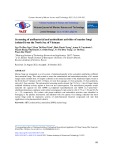
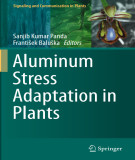
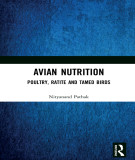
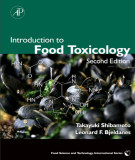

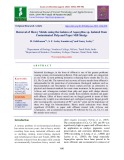

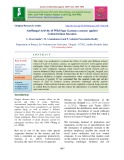

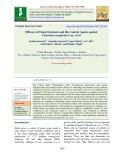

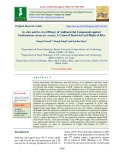
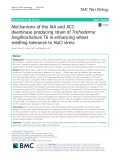




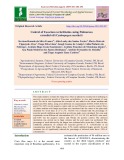
![Evaluation of different fungi toxicants against Corynespora Cassiicola causing corynespora leaf fall (CLF) disease of rubber [Hevea brasiliensis Muell. Arg.,] Evaluation of different fungi toxicants against Corynespora Cassiicola causing corynespora leaf fall (CLF) disease of rubber [Hevea brasiliensis Muell. Arg.,]](https://tailieu.vn/image/document/thumbnail/2019/20191208/cothumenhmong1/135x160/451575821464.jpg)





